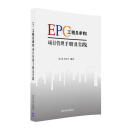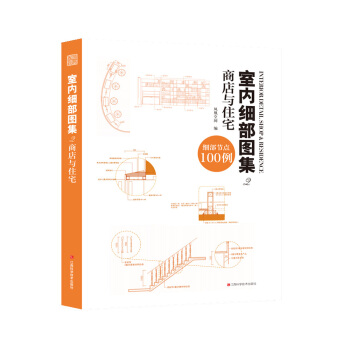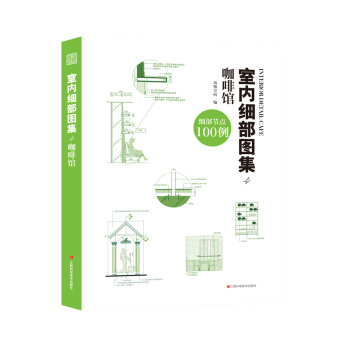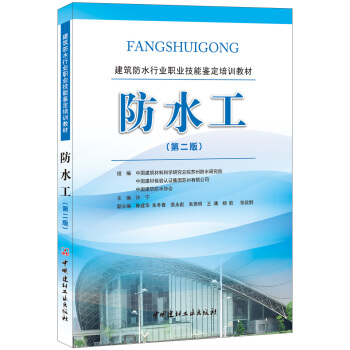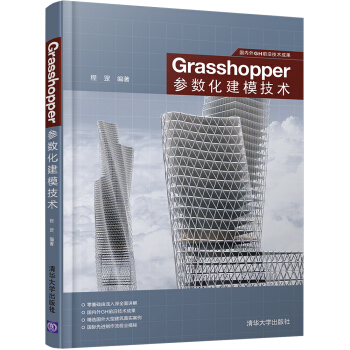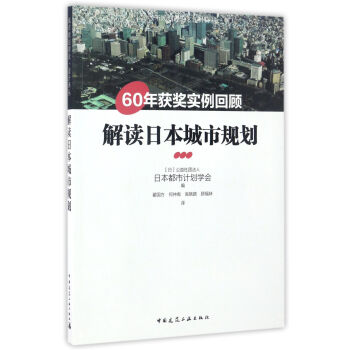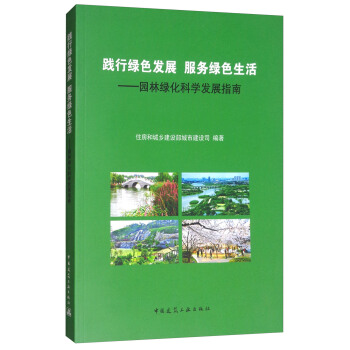

具体描述
内容简介
为深入贯彻落实党中央关于生态文明建设、推动绿色发展等的战略部署要求,顺利实施《国家“十三五”时期城镇园林绿化发展规划》,住房和城乡建设部城市建设司组织一批长期从事园林绿化规划建设管理工作的领导干部、专家学者,坚持问题导向和需求指引,编撰了《践行绿色发展 服务绿色生活:园林绿化科学发展指南》。《践行绿色发展 服务绿色生活:园林绿化科学发展指南》以图文并茂的形式,总结成功经验,分析存在问题,探索指引正确的发展方向,积极回应新常态下园林绿化行业发展的迫切要求。
内页插图
目录
序一、引言
二、核心理念
(1)园林绿化是唯一有生命的城市基础设施
(2)同林绿化是贯彻“五大理念”的重要举措
(3)园林绿化的第一要义是生态优先
(4)园林绿化的根本目的是为人服务
(5)园林绿化是科学与艺术相结合的综合学科
(6)园林绿化不能简单等同于植树造林
(7)园林绿化的文化表达应精准适度
(8)保护园林绿化成果是生态保护和城市可持续发展的基本要求
(9)园林绿化是一个从设计到施工、管养全生命周期的艺术创作过程
(10)郊区植树造林不能替代城区园林绿化
(11)城市园林绿地均好分布是绿色福利均等化的基本要求
(12)园林绿化必须坚持“因地制宜、适地适树”的原则
(13)园林绿化应以政府投入为主,保障其公益属性
(14)不同权属的绿地建设管养都需要园林绿化行业指导和统筹把关
(15)管理职能健全和专业人才队伍稳定才能保障园林绿化行业可持续发展
(16)海绵城市建设首先要保护城市绿地这个最大的海绵体
(17)节约型园林绝不是低价园林
(18)提升城市形象不等于简单打造几张“景观名片”
三、涉绿规划
(一)总则
(二)理念及做法
(19)城乡总体规划编制(修编)前应开展绿地空间发展专项研究
(20)城市详细规划不能随意变更甚至减少绿地
(21)城市绿线应该依规划定并保证其法定效力
(22)城乡规划要确保绿地总量达标且结构合理
(23)见缝插绿不能代替规划建绿
(24)城市绿地均好布局是绿色共享的基本保障
(25)提升老城区绿量和品质是最重要的惠民举措
(26)城市建设项目配套绿地率达标是改善人居环境的根本
(27)道路绿化是城市景观风貌的骨架,其绿地率必须达标
(28)构建城市生态网络应因地制宜,适应并促进城市发展
(29)编制生态修复专项规划应以生态普查与评估分析为基础
(30)城市建设和改造应合理避让古树大树
(31)公园周边景观应严格控制,不能把公园变成“桶底”
(32)科学规划防护绿地,构筑城市生态屏障
(33)城市绿地不能成为海绵城市建设的牺牲品
(34)滨河绿地建设应兼顾生态效应和景观效果
(35)城市停车难问题不能靠占用绿地来解决
(36)城市绿地地下空间开发应严格管控
(37)商业步行街规划应适当预留绿地空间
(38)湿地保护和恢复应严格控制人工取水或补水
四、园林设计
(一)总则
(二)理念及做法
1.通用性要求
(39)城市绿地的功能定位应从设计层面精准控制
(40)园林设计应严格控制边缘树种和“名贵”植物用量
(41)园林绿化忌造林式横平竖直或单一的大草坪大色块
(42)过度密植、一夜成林都是违背自然、违背科学的
(43)保护植物多样性的同时应防止外来物种入侵
(44)园林绿化严禁使用假树假花
(45)移植大树、古树既劳民伤财更破坏生态
(46)城市绿化彩化应多用木本开花和色叶植物,少用草花营造“花海”
(47)园林绿化应当合理彰显地域风貌和文化特色,忌乱贴文化标签
(48)人工水景设计应因地制宜、体量得当
(49)水体岸线应采用生态化设计,严格控制硬质驳岸、硬化衬底
(50)绿地的海绵功能不应简单等同于下凹式绿地和雨水花园
(51)园林土建工程不应片面追求用材“高大上”和室外环境室内化
(52)立体绿化是竖向拓展城市绿色空间的最佳途径
(53)竖向设计要统筹考虑景观营造、径流控制、坡度安全等
(54)公同绿地中雕塑和小品应少而精
2.关于公园绿地
(55)公园绿地方案设计前应充分研究用地周边现状
(56)公园绿地应从设计环节严控建筑物和硬化地面比例
(57)公园设汁应避免对原有地形地貌大改大建
(58)公园绿地设计应合理控制开敞空间尺度,切忌盲目追求大广场
(59)公园绿地建设切忌滥用堆山置石
(60)公园绿地标识系统设置应以人为本
3.关于附属绿地
(61)道路绿化设计应体现遮阴、隔离、安全等功能需求
(62)海绵城市绿地建设应防止初期雨水直排绿地
(63)城市绿道建设切忌盲目跟风
(64)居住区绿化美化应严格控制华而不实的硬质景观
五、施工养护
(一)总则
(二)理念及做法
(65)园林绿化的施工和养护是园林艺术再创作过程
(66)监督落实参建各方责任才能确保工程质量
(67)专业人员应全程参与园林绿化工程建设
(68)低价中标难以保证园林工程质量,甚至造成巨大浪费
(69)园林绿化应避免违背植物生长习性的不合理种植
(70)园林绿化养护管理市场化不等于政府放手不管
(71)种植土壤安全合格是植物成活并健康生长的基本条件
(72)根系健康发育是园林植物成活生长的前提和主要表现
(73)园林绿化必须坚持“三分种七分管”
(74)园林绿化反对树木过度修剪
(75)园林绿化养护要及时疏移过密树木
六、行业管理
(一)总则
(二)理念及做法
(76)建立健全园林绿化法规标准体系是行业管理的核心工作
(77)绿地系统规划是城市园林绿化建设管理的龙头
(78)近期建设规划和项目库编制是实施绿地系统规划的基本保障
(79)绿色图章制度是绿地建设全过程管理的抓手
(80)城镇园林绿化要始终坚持以人为本
(81)公园配套服务设施应符合公益性要求
(82)引入社会资本不能取代政府为主的园林绿化投入方式
(83)数字园林智慧园林要首先建立标准化信息化管理系统
(84)保护古树名木就是保护城市的历史与记忆
(85)正常行使行业管理职能必需健全的管理机构和专业人才队伍
(86)园林绿化专业化精细化管理必须依靠专业人才队伍
(87)科研与创新才是园林绿化行业持续发展的恒动力
附录1:十八大以来习近平同志关于生态文明建设等讲话摘录
附录2:相关法规标准
前言/序言
绿水青山就是金山银山。党的十八大以来,以习近平同志为核心的党中央,站在中华民族伟大复兴中国梦的战略高度和历史维度,将生态文明建设纳入中国特色社会主义“五位一体”总体布局,提出了一系列生态文明建设的新思想新论断新要求,将生态文明建设推向了新的高度。园林绿化作为极富生命力的城市基础设施,是推动城市绿色发展、服务城市绿色生活的重要内容,是打造宜居宜业宜游美好城市的必然要求,更是落实生态文明建设要求、建设美丽中国的重要抓手。新中国成立特别是改革开放以来,我国园林绿化事业蓬勃发展,园林绿地布局日趋合理、数量大幅增长、质量明显提升,城市山体、水体、废弃地等生态修复与再利用方面也取得了显著成效,在服务市民生活、美化城市面貌、改善生态环境等方面,发挥了重要作用。截至2016年底,全国城市建成区绿地率达到36.43%,绿化覆盖率40.30%;城市公园达到15370个,人均公园绿地面积13.70平方米,服务半径覆盖率达80.6%;已建成城市绿道2.09万公里。
2015年12月,中央城市工作会议在京召开。这次会议是我国城市发展史上的一个里程碑,它指明了今后一段时期城市发展的方向,也吹响了城市发展的新号角。习近平同志在会上指出,要统筹生产、生活、生态三大布局,提高城市发展的宜居性。
为深入贯彻落实党中央国务院关于生态文明建设的部署要求,顺利实施《国家“十三五”时期城镇园林绿化发展规划》,加快促进城市宜居水平提升,我部组织一批长期从事园林绿化规划建设管理工作的领导干部、专家学者,坚持问题导向和需求指引,编撰了本书。这本书以图文并茂的形式,总结成功的经验,分析存在的问题,探索未来发展的方向,相信会对新形势下园林绿化事业的发展有所裨益。
希望本书能成为园林绿化行业各级领导干部和技术管理人员,尤其是新人行的园林绿化行业主管部门领导干部的绿色助手。让我们携起手来,为推进园林绿化事业可持续发展,为建设美丽中国、实现中华民族伟大复兴的中国梦而共同奋斗。
用户评价
这本书的书名“践行绿色发展 服务绿色生活:园林绿化科学发展指南”立刻引起了我的好奇心。我一直认为,将宏观的“绿色发展”理念转化为微观的“绿色生活”体验,园林绿化扮演着至关重要的角色。这本书似乎正好弥合了这一认知鸿沟。我迫切想知道,书中是如何将科学理论与实际应用相结合的。例如,在城市化进程加速的背景下,如何科学规划和设计绿地,使其在涵养水源、净化空气、降低城市热岛效应等方面发挥最大效用?书中是否会探讨不同气候带、不同城市肌理下的园林绿化策略?我脑海中浮现出书中可能包含的丰富内容,比如关于本土植物的选择与应用,如何通过科学的养护管理,延长绿地的生命周期,降低维护成本,同时又能最大化其生态和社会效益。我也很想了解书中是否会涉及现代科技在园林绿化中的应用,例如大数据、遥感技术在绿地监测和管理中的作用,以及智慧灌溉、病虫害预警等方面的创新。更重要的是,我希望这本书能够引导读者认识到,园林绿化不仅仅是“种树种花”,它还蕴含着深厚的生态智慧和人文关怀。例如,如何通过绿化设计,提升社区的宜居性和吸引力,促进邻里交流,甚至带动当地的经济发展。我期待书中能提供一些关于市民参与园林绿化建设的途径和方法,让每个人都能成为绿色发展的积极参与者和受益者。总之,这本书给我一种预感,它将是一本既有深度又有广度的指南,能够帮助我更全面地理解和实践绿色发展理念。
评分这本书的标题就足够吸引我了,我一直对如何在生活中更好地践行绿色发展感兴趣,而“园林绿化科学发展指南”这个副标题更是直击要害,让我觉得这本书一定能提供切实可行的方法和理论支持。我一直觉得,绿色发展不是空洞的口号,而是需要落实到日常的点滴行动中,而园林绿化作为城市环境的重要组成部分,其科学发展无疑是提升生活品质、促进可持续发展的关键。我期待书中能深入剖析当前园林绿化面临的挑战,比如城市扩张对绿地空间的挤压,以及如何在高密度城市环境中最大化绿地的生态效益。书中是否会提到诸如海绵城市建设、垂直绿化、屋顶花园等前沿技术和理念?这些都是我非常关心的问题。同时,我也希望这本书能不仅仅停留在技术层面,而是能引导读者思考园林绿化在文化传承、社区营造、居民身心健康等方面的重要作用。例如,如何通过科学的绿化设计,打造既美观又具有生态功能的公共空间,促进人与自然的和谐共处。我设想书中可能会包含大量的案例分析,通过国内外成功的园林绿化项目,来展示绿色发展理念如何转化为具体的实践成果,为读者提供宝贵的借鉴。此外,作为一个普通读者,我也希望书中能提供一些易于理解和操作的建议,让普通市民也能参与到绿色生活和绿色发展的行动中来,比如如何在家居环境、阳台绿化等方面做出贡献。总而言之,我对这本书充满了期待,相信它能为我打开一扇通往更绿色、更健康生活的大门。
评分The title, "Practicing Green Development, Serving Green Living: A Scientific Development Guide for Landscape Greening," immediately resonated with me. I’ve always felt a disconnect between the broad concept of "green development" and the practical realities of "green living," and I believe landscape greening is the bridge between them. This guide, as the title suggests, promises to bridge that gap. I’m particularly interested in how the book defines and implements the "scientific development" aspect. Does it explore the ecological principles behind urban green spaces, such as their role in mitigating urban heat islands, managing stormwater, and improving air quality? I’m hoping for insights into how to design and manage green spaces that are not only aesthetically pleasing but also ecologically functional and resilient. For example, what are the best practices for selecting native plant species that support local biodiversity? I also anticipate the book will cover the integration of greening with other urban systems, like renewable energy or sustainable transportation networks. Moreover, I’m keen to learn about the economic and social benefits of scientifically managed landscape greening, perhaps through case studies of successful projects that have enhanced community well-being and local economies. The subtitle "scientific development guide" also implies a focus on practical application and measurable outcomes, which is something I deeply value. I hope the book provides actionable strategies and perhaps even frameworks for assessing the effectiveness of greening initiatives, making the pursuit of a greener future more concrete and achievable. Ultimately, I see this book as a crucial resource for anyone looking to understand and contribute to a more sustainable urban environment.
评分我之所以对这本书《践行绿色发展 服务绿色生活:园林绿化科学发展指南》产生了浓厚的兴趣,完全是源于它直接切中了当前社会发展的重要议题。绿色发展,这四个字不仅仅是政策的导向,更应该成为我们每个人的生活信条。而园林绿化,恰恰是连接宏观概念与微观体验最直观的媒介。我迫切地想知道,这本书将如何“科学”地解读园林绿化。它是否会从土壤科学、植物学、生态学等多个学科的角度,来阐述绿地建设的科学原理?我设想书中可能会详细介绍如何根据不同的城市环境和气候条件,选择最适宜的植物种类,以达到最佳的生态效益和维护效率。例如,如何在干旱地区推广节水型绿化,如何在沿海地区选择抗盐碱的植物。此外,我也对书中关于园林绿地生态功能提升的策略感到好奇。它是否会探讨如何通过科学的设计,增加绿地的生物多样性,构建健康的城市生态系统?例如,如何吸引传粉昆虫、鸟类等有益生物,形成一个良性循环。我也期待书中能提供关于绿色基础设施建设的案例分析,以及如何将园林绿化与城市排水系统、能源系统等进行有效整合,实现协同发展。更让我期待的是,这本书是否会提供一些关于如何衡量和评估园林绿化项目成效的指标和方法,让绿色发展不再是模糊的愿景,而是可以被量化和优化的目标。这本书在我看来,将是一部兼具学术深度与实践指导意义的著作,能够帮助我更科学、更有效地参与到绿色发展和绿色生活的进程中。
评分这本书的题目,特别是“园林绿化科学发展指南”这几个字,立刻抓住了我的注意力。我一直觉得,在当今社会,绿色发展已经不再是一个可选项,而是一个必选项。而园林绿化,作为城市生态系统的重要组成部分,其科学发展水平直接关系到我们能否真正实现绿色生活。我非常好奇这本书会从哪些角度来阐述“科学发展”这个概念。它是否会深入探讨园林绿化在生态修复、生物多样性保护方面的潜力?例如,如何通过科学的设计和管理,为城市中的野生动植物提供栖息地,建立起有弹性的生态网络。我设想书中可能会包含关于城市绿地系统规划的论述,包括绿廊、绿楔、公园绿地等不同类型绿地的功能与配置,以及如何将它们有机地结合起来,形成一个整体性的绿色基础设施。同时,我也对书中关于绿色建筑与园林绿化的融合感兴趣。比如,如何利用建筑周边的绿化空间,提升建筑的节能效果,同时创造更舒适的室内外环境。此外,我希望能在这本书中找到关于可持续的园林养护方法的指导,例如减少化学品的使用,推广有机肥料,以及节水灌溉技术等。我期待书中能够提供具体的案例,展示不同类型城市在园林绿化科学发展方面所取得的成就和经验,并分析其背后的成功因素。更重要的是,我希望这本书能够激发读者对于绿色生活的更多思考,并提供可行的实践路径,让每个人都能在自己的能力范围内,为绿色发展贡献一份力量。
评分“践行绿色发展 服务绿色生活:园林绿化科学发展指南”——光是书名就传递出一种积极的信号,让我觉得它是一本能够将宏大的环保理念落地到具体生活实践中的著作。我一直对园林绿化在提升城市宜居性和居民幸福感方面的作用深感认同,但也常常感到在理论层面和实际操作之间存在着一些隔阂。这本书的出现,似乎正是为了填补这一空白。我非常期待书中能够深入剖析当前园林绿化领域存在的普遍性问题,比如过度追求观赏性而忽视生态功能,或者在建设过程中造成的资源浪费和环境污染。我希望书中能提出切实有效的解决方案,例如如何通过科学的植物配置,实现四季有景、多季有花,同时又能满足生态净化、固碳释氧等功能。我设想书中可能会包含关于城市绿地功能的多元化探讨,不仅仅是美化环境,更要注重其在雨水管理、降低噪声、调节微气候等方面的作用。我也对书中是否会涉及园林废弃物的资源化利用,以及如何推广生态葬等可持续的生命告别方式有所期待。更重要的是,我希望这本书能够为普通市民提供一些关于如何在家居、社区层面参与绿色发展的指导。例如,如何通过阳台绿化、屋顶花园的建设,为城市增添更多绿色,以及如何支持和参与社区的绿化项目。总而言之,这本书在我看来,将是一本集理论指导、实践借鉴和人文关怀于一体的宝贵读物,能够帮助我更深刻地理解和践行绿色发展理念,并将其融入到日常生活中。
评分From the moment I saw the title, "Practicing Green Development, Serving Green Living: A Scientific Development Guide for Landscape Greening," I knew this was a book I needed to read. The phrase "scientific development" in particular piqued my interest, as I believe that any meaningful progress in environmental initiatives must be grounded in solid scientific principles. I'm eager to understand how the book elaborates on this scientific approach within the realm of landscape greening. Does it delve into the ecological science underpinning successful green spaces, such as soil health, plant physiology, and biodiversity conservation? I anticipate detailed discussions on how to choose and implement plant species that are not only beautiful but also contribute to ecosystem services like carbon sequestration, water purification, and habitat provision. I'm also very curious about the book's perspective on the long-term sustainability of landscape projects. Does it address issues like climate change adaptation, water resource management in green infrastructure, and the use of resilient design strategies? Furthermore, I hope the guide offers practical advice on integrating greening with other urban planning considerations, perhaps in relation to public health, urban resilience, or even the development of smart city technologies. The prospect of learning about innovative approaches to urban greening, such as vertical gardens, green roofs, or the use of bioswales for stormwater management, is incredibly exciting. This book, I believe, will be an essential read for anyone seeking to move beyond superficial environmentalism and embrace a truly science-based approach to creating a greener and more livable urban future.
评分The title, "Practicing Green Development, Serving Green Living: A Scientific Development Guide for Landscape Greening," immediately struck a chord with my personal commitment to a more sustainable lifestyle. I've always believed that landscape greening is one of the most tangible ways individuals and communities can contribute to broader environmental goals. What excites me about this particular guide is the promise of a "scientific development" approach. I'm eager to discover how the book dissects the science behind effective greening strategies. Does it explore the intricate relationships between plant life, soil, and urban ecosystems? I envision chapters dedicated to understanding the specific ecological functions of various types of green spaces, from expansive parks to small urban gardens, and how to maximize their benefits for both the environment and human well-being. I'm particularly interested in learning about innovative methods for urban greening that are both effective and resource-efficient. Perhaps the book will discuss strategies for creating "green infrastructure" that not only beautifies our cities but also provides crucial ecosystem services like flood control and air purification. I also hope to find guidance on how to adapt greening practices to different urban contexts and climatic challenges, ensuring that our green spaces are not only beautiful but also resilient. The prospect of gaining a deeper, science-backed understanding of how to foster a thriving urban environment through thoughtful landscape development is highly appealing, and I believe this book will be an invaluable resource in that pursuit.
评分这本书的题目,特别是“园林绿化科学发展指南”这几个字, immediately caught my attention. I have always believed that green development is not just an empty slogan, but a practical undertaking that needs to be integrated into our daily lives. And landscape greening, as a vital component of urban ecosystems, directly influences our ability to achieve a truly green lifestyle. I am eager to know how the book defines and elaborates on "scientific development" in the context of landscape greening. Does it delve into the scientific principles behind green space construction from various disciplines such as soil science, botany, and ecology? I envision the book providing detailed explanations on selecting the most suitable plant species based on different urban environments and climatic conditions to achieve optimal ecological benefits and maintenance efficiency. For instance, how to promote water-saving landscaping in arid regions or choose salt-tolerant plants in coastal areas. Furthermore, I am curious about strategies to enhance the ecological functions of landscape green spaces. Does it explore how to increase biodiversity and establish healthy urban ecosystems through scientific plant selection and maintenance? I imagine the book might include case studies on green infrastructure development and how to effectively integrate landscape greening with urban drainage and energy systems for synergistic development. More importantly, I hope the book will offer methods and approaches for citizens to participate in landscape greening initiatives, making green development a tangible and measurable goal rather than a vague aspiration. This book, in my opinion, will be a valuable resource that combines academic depth with practical guidance, enabling me to engage more scientifically and effectively in the process of green development and green living.
评分当我看到《践行绿色发展 服务绿色生活:园林绿化科学发展指南》这个书名时,我脑海中立刻浮现出各种与绿色生活息息相关的画面。我一直觉得,城市的“绿肺”——园林绿化,是衡量一个城市是否真正实现可持续发展的关键指标。而“科学发展”这四个字,则表明这本书并非流于表面,而是要深入探讨其背后的原理和方法。我非常想了解,书中是如何界定“绿色发展”与“绿色生活”之间的关系的。它是否会从生态、经济、社会等多个维度,来阐述园林绿化在其中的作用?我期待书中能提供关于城市绿地系统规划和设计的具体指导,例如如何合理布局公园、绿道、街头绿地等,形成一个有机的、功能性的绿色网络。我也对书中关于如何提升绿地的生态服务功能感到好奇。它是否会探讨如何通过科学的植物配置和养护,来提高绿地的固碳能力、净化空气的能力、涵养水源的能力?我设想书中可能会包含一些关于绿色建筑与园林绿化相结合的案例,例如如何利用屋顶绿化、墙体绿化来降低建筑能耗,改善室内外环境。此外,我也希望这本书能够提供一些关于市民参与园林绿化建设的途径和方法,让更多的人能够亲身参与到绿色生活的实践中来。例如,如何在家中打造迷你花园,如何在社区参与义务植树活动等。这本书对我而言,将是一本充满启发的读物,它能够帮助我更全面地理解绿色发展的重要性,并为我提供切实可行的实践指南,让我成为绿色生活的积极践行者。
相关图书
本站所有内容均为互联网搜索引擎提供的公开搜索信息,本站不存储任何数据与内容,任何内容与数据均与本站无关,如有需要请联系相关搜索引擎包括但不限于百度,google,bing,sogou 等
© 2025 book.idnshop.cc All Rights Reserved. 静思书屋 版权所有








![西方园林史:19世纪之前(第2版)/高等院校园林与风景园林专业规划教材 [Westem Landscape History] pdf epub mobi 电子书 下载](https://pic.tinynews.org/12194002/591a436cN8ce8353b.jpg)
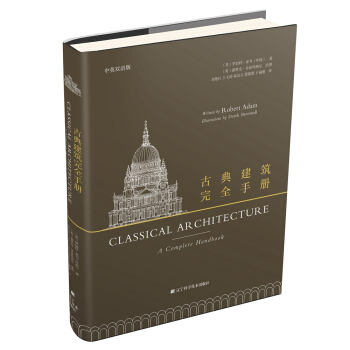
![中华人民共和国国家标准(GB/T51226-2017):多高层木结构建筑技术标准 [Technical Standard for Multi-story and High Rise Timber Buildings] pdf epub mobi 电子书 下载](https://pic.tinynews.org/12194335/5a3cddb5N08bb7ffb.jpg)
